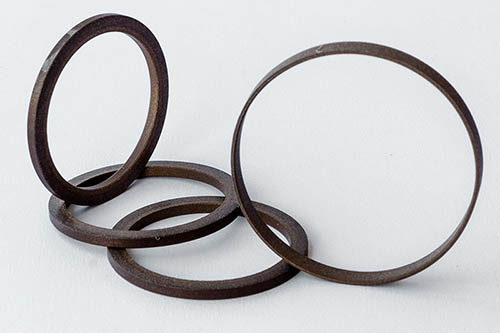[fullwidth background_color=“#eaeaea“ background_image=““ background_parallax=“none“ enable_mobile=“no“ parallax_speed=“0.3″ background_repeat=“no-repeat“ background_position=“left top“ video_url=““ video_aspect_ratio=“16:9″ video_webm=““ video_mp4=““ video_ogv=““ video_preview_image=““ overlay_color=““ overlay_opacity=“0.5″ video_mute=“yes“ video_loop=“yes“ fade=“no“ border_size=“0px“ border_color=““ border_style=“solid“ padding_top=“25″ padding_bottom=“0″ padding_left=“0″ padding_right=“0″ hundred_percent=“no“ equal_height_columns=“no“ hide_on_mobile=“no“ menu_anchor=““ class=““ id=““][title size=“1″ content_align=“left“ style_type=“none“ sep_color=““ margin_top=““ margin_bottom=““ class=““ id=““]Kunststoffdrehteile[/title][/fullwidth][fullwidth background_color=““ background_image=““ background_parallax=“none“ enable_mobile=“no“ parallax_speed=“0.3″ background_repeat=“no-repeat“ background_position=“left top“ video_url=““ video_aspect_ratio=“16:9″ video_webm=““ video_mp4=““ video_ogv=““ video_preview_image=““ overlay_color=““ overlay_opacity=“0.5″ video_mute=“yes“ video_loop=“yes“ fade=“no“ border_size=“0px“ border_color=““ border_style=““ padding_top=“20″ padding_bottom=“20″ padding_left=“0″ padding_right=“0″ hundred_percent=“no“ equal_height_columns=“no“ hide_on_mobile=“no“ menu_anchor=““ class=““ id=““][one_half last=“no“ spacing=“yes“ center_content=“no“ hide_on_mobile=“no“ background_color=““ background_image=““ background_repeat=“no-repeat“ background_position=“left top“ hover_type=“none“ link=““ border_position=“all“ border_size=“0px“ border_color=““ border_style=““ padding=““ margin_top=““ margin_bottom=““ animation_type=““ animation_direction=““ animation_speed=“0.1″ animation_offset=““ class=““ id=““][imageframe lightbox=“no“ gallery_id=““ lightbox_image=““ style_type=“none“ hover_type=“none“ bordercolor=““ bordersize=“0px“ borderradius=“0″ stylecolor=““ align=“none“ link=““ linktarget=“_self“ animation_type=“0″ animation_direction=“down“ animation_speed=“0.1″ animation_offset=““ hide_on_mobile=“no“ class=““ id=““]  [/imageframe][/one_half][one_half last=“yes“ spacing=“yes“ center_content=“no“ hide_on_mobile=“no“ background_color=““ background_image=““ background_repeat=“no-repeat“ background_position=“left top“ hover_type=“none“ link=““ border_position=“all“ border_size=“0px“ border_color=““ border_style=““ padding=““ margin_top=““ margin_bottom=““ animation_type=““ animation_direction=““ animation_speed=“0.1″ animation_offset=““ class=““ id=““][fusion_text]
[/imageframe][/one_half][one_half last=“yes“ spacing=“yes“ center_content=“no“ hide_on_mobile=“no“ background_color=““ background_image=““ background_repeat=“no-repeat“ background_position=“left top“ hover_type=“none“ link=““ border_position=“all“ border_size=“0px“ border_color=““ border_style=““ padding=““ margin_top=““ margin_bottom=““ animation_type=““ animation_direction=““ animation_speed=“0.1″ animation_offset=““ class=““ id=““][fusion_text]
Allgemeine Beschreibung
[/fusion_text][/one_half][separator style_type=“none“ top_margin=“10″ bottom_margin=““ sep_color=““ border_size=““ icon=““ icon_circle=““ icon_circle_color=““ width=““ alignment=“center“ class=““ id=““][one_half last=“no“ spacing=“yes“ center_content=“no“ hide_on_mobile=“no“ background_color=““ background_image=““ background_repeat=“no-repeat“ background_position=“left top“ hover_type=“none“ link=““ border_position=“all“ border_size=“0px“ border_color=““ border_style=““ padding=““ margin_top=““ margin_bottom=““ animation_type=““ animation_direction=““ animation_speed=“0.1″ animation_offset=““ class=““ id=““][fusion_text]
Werkstoffe
[/fusion_text][fusion_text]
| Werkstoff | Max. Teperatur |
|---|---|
| POM | 150°C |
| PA | 130°C |
| PEEK | 300°C |
| PE | 100°C |
| PVC | 60°C |
| PSU | 180°C |
| PP | 100°C |
| PVDF | 160°C |
| PTFE | 300°C |
| PMMA | 100°C |
| PC | 140°C |
[/fusion_text][separator style_type=“none“ top_margin=“10″ bottom_margin=““ sep_color=““ border_size=““ icon=““ icon_circle=““ icon_circle_color=““ width=““ alignment=“center“ class=““ id=““][fusion_text]Die große Vielzahl der Standard-, Konstruktions- und Hochleistungs Kunststoffe mit ihren verschiedenen Mischungszusätzen lässt sich hier leider nicht darstellen. Benötigen Sie Teile aus Werkstoffen, welche wir nicht aufgeführt haben, fragen Sie uns bitte einfach danach.[/fusion_text][/one_half][one_half last=“yes“ spacing=“yes“ center_content=“no“ hide_on_mobile=“no“ background_color=““ background_image=““ background_repeat=“no-repeat“ background_position=“left top“ hover_type=“none“ link=““ border_position=“all“ border_size=“0px“ border_color=““ border_style=““ padding=““ margin_top=““ margin_bottom=““ animation_type=““ animation_direction=““ animation_speed=“0.1″ animation_offset=““ class=““ id=““][fusion_text]
Stellen Sie uns eine unverbindliche Anfrage
[/fusion_text][fusion_text]
